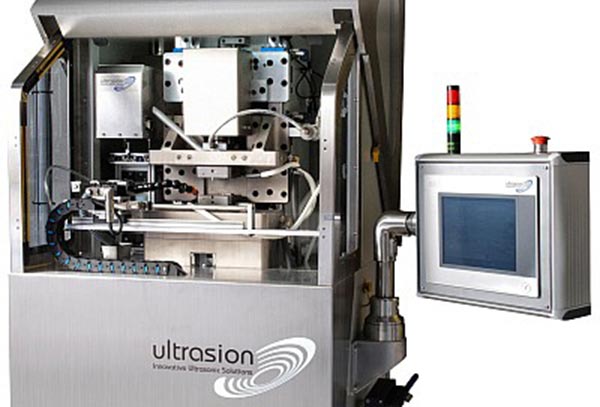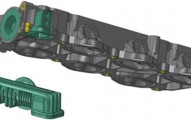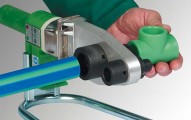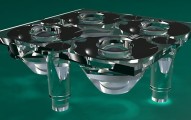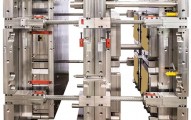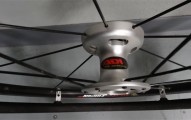New Ultrasion Technology Molds via Ultrasonic Melting
The melting of plastic via ultrasonic vibratory energy such as first used in welding two pieces of plastic together has been around for a few decades. Barcelona, Spain-based Ultrasion SL has taken that to a higher level, using vibratory energy to actually melt plastic pellets to injection mold very small (micro) precision parts. With many products trending toward miniaturization in a number of industry sectors including electronics, telecommunications and medical, molders now have an alternative to mold these micro parts.
Using this innovative ultrasonic technology offers molders and OEMs a cost-effective, accurate and efficient manufacturing alternative. This new micro-molding process is based on the use of ultrasonics as the agent for melting the polymer, without the need for screw and barrel and heater bands. Additionally, the ultrasonic technology is extremely energy efficient and minimizes the waste that is often associated with molding micro parts, where the runner system often weighs multiple times the weight of the actual part.
At the same time, as ultrasonics induces extremely low viscosity in melted materials, product designers can now innovate in ways they’ve not been able to previously, said Enric Sierea, general manager at Ultrasion SL. Sierea, who spent part of his career as the EMEA business manager at Husky Injection Molding Systems, and also director of sales (EMEA) at Moldflow Corp., said that Ultrasion has spent a number of years researching and developing this new plastic molding technology.
Encapsulated in the Sonorus IG machine that is now being sold commercially worldwide, Ultrasion designed a process based around the use of ultrasonic as the melting agent, “which opens up enormous potential for manufacturers to save on energy, material, and tooling costs, but above all to innovate and manufacture today parts previously unable to make,” noted Sierea.
The basics of the ultrasonic molding process begin with the use of a dosage system that delivers the correct quantity of standard pellets for every shot direct to the mold. The production cycle begins with the mold in a closed position and dosed with raw material at room temperature. The material is then contacted by an ultrasonic horn or “sonotrode” which is lowered, and in addition to melting the material it forces the polymer to flow into the mold cavities. The sonotrode then returns to its original position, and the cycle begins again.
The ultrasonic molding technology is precise, uses no heaters, and the process means that there is no material residence time, which means no material degradation. The energy needed in the process is only at the point when the ultrasonic horn contacts the raw material to induce melt. That means the Ultrasion process uses upwards of 90% less energy than a traditional micro injection technology.
Material waste is often a problem in micro-molding, because of the size of the parts, which can result in cases where 99% of the material processed will be scrapped, explained Sierea. In the Ultrasion process, only the material required for the actual part is dosed, thus runner and sprue waste is all but eliminated. Maximum shot weight for the Ultrasion process currently is 2.5 grams. However the reduced viscosity allows for the attainment of especially long parts or parts with extremely thin walls. The Sonorus 1G can easily mold 15mm-long parts with wall thicknesses of 0.075 mm, and achievable tolerances are in the area of 0.01 mm, as realized by actual industrial applications.
Commercialized toward the end of 2013, the Sonorus 1G equipment is currently being sold worldwide into all industrial sectors, but early sales have been primarily in the medical, aerospace, electronic, and military sectors where precision and accuracy is key. “The technology has been designed for ease of use, and requires no more than a short orientation and training session as the machine is installed,” said Sierea. “There are a few simple adaptations necessary to the tooling for the Sonorus 1G, which are covered in the installation training and in specification documents that the company issues to all customers.”

